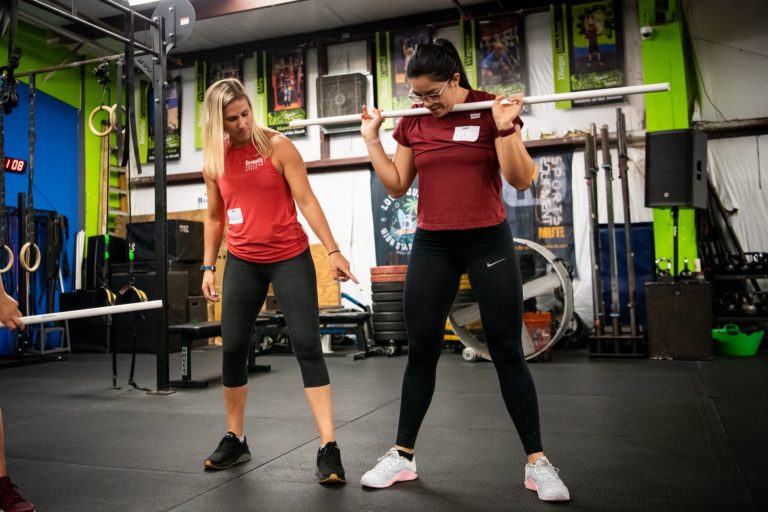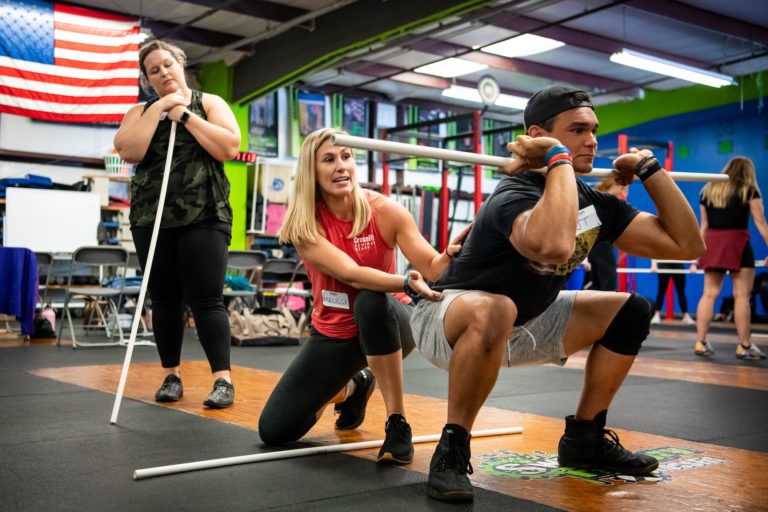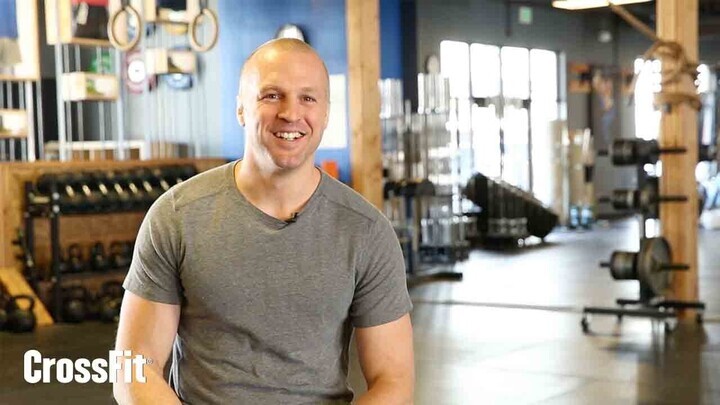Navigating the process of who, what, when, and how to correct your athletes while running a smooth-flowing group class will create challenges for coaches regardless of skill level. The demand upon CrossFit coaches to refine movements while creating a well-managed and fun class experience is not to be overlooked. Luckily, some practices will aid with the development of this aspect of coaching. Take a look at the following:
Before Class: Add Faults and Corrections to Your Lesson Plan
Lesson plans typically focus on establishing timelines for efficiency, scaling, introduction notes on the stimulus of a workout, your teaching progression, your general warm-up, and cool-down. However, if you want to go a layer deeper, add in two to five common faults for each movement and one to two corrections for each fault. This process will take some guesswork, but it will likely reduce the time necessary to correct movement in the moment because you will have already prepared for many of the situations you will encounter before the class starts.
Everyone Gets Cues
Everyone gets cues during CrossFit class, regardless of whether the athlete has 10 years of experience or 10 days of experience. However, how you cue and how much time you spend with someone may be different. For experienced athletes, your cueing may revolve more around subtle inefficiencies of their movement, like bar path issues, and how to string together touch-and-go snatches more efficiently. They may respond more effectively to quick and straightforward verbal cues than inexperienced athletes. These athletes may also benefit from being challenged to use a heavier load than usual, move faster, or implement a new scaling option.
New athletes may need more explanation of how to correct a fault or what fault is present. While correcting this athlete during your group-guided specific warm-up is advised, there will be times when they need more explanation than what can be given at that time. Keep track of these athletes; you can devote more attention to them during your build-up and transition times.
Regardless, the goal is to give everyone a cue or one thing to focus on for the workout. After each class, assess yourself to see if you achieved that goal.
Triage Your Corrections
Sometimes, an athlete demonstrates multiple faults, and it can be tempting to try to correct everything. This is well-intended but may be too overwhelming for the athlete and you, potentially taking away from running a smooth class. Instead, try correcting one fault at a time and triaging them effectively. Generally speaking, you can first correct the fault that impacts safety the most. When this fault looks better, you can move on to other faults affecting efficiency. In many cases, you may only prioritize and correct one fault that day and modify the workout accordingly, knowing there is time in the future to address other issues.

CrossFit Level 1 Seminar – Sweat Factory CrossFit
Macro-Micro Cueing Approach
During your coach-led specific warm-up/skill work, there are ways to make multiple corrections per group guided rep utilizing a macro-micro (and potentially another macro) approach. This sounds complicated, but it is actually quite simple and involves scanning the group during the static phase(s) of a movement and then focusing on one athlete at a time. For example, in the deadlift:
- Set-up position = Macro — Scan the group for set-up positions and faults, and give one to two cues.
- Lifting phase = Micro — Focus on one person and assess the bar path, and give feedback.
- Standing position = Macro — Scan the group and assess the lockout position.
- Return phase = Micro — Focus on one person and assess if the hips push back to initiate the return.
When implementing this protocol, resist the urge to scan too many people. I recommend a 1-1-1 approach to start. This means looking at one person in the set-up position, then a different person during the lifting phase, and then another person in the finish position. Once you are comfortable doing this, you can move on to a 2-1-2 approach.
This strategy is effective but requires practice and quick cues that get the job done.
Use a Variety of Cue Styles
Different athletes will respond better to different styles of cues. We use three main styles of cues:
Verbal — In this instance, you name the body part out of place and say where you want it to go. The most effective cues tend to be short, specific, and actionable. These types of cues are great during skill work, heavy days, and conditioning workouts.
Visual — This involves telling the athlete where on your body you want them to look, then showing them what they are doing, and finishing by showing them what you want them to do. This demo style can be used well during skill work and the workout without significantly slowing the athlete down.
Tactile — This involves giving the athlete a target to reach for or some sort of “hands-on” approach to help them achieve a better position. This style is used infrequently during group-guided skill instruction and workouts. It is typically used when athletes need to be slowed down a little during a conditioning workout or during transition times when they need more attention.

CrossFit Level 1 Seminar – Sweat Factory CrossFit
Take a look at what each of these cues could look like for an athlete whose knees are caving in during a squat:
Verbal Cue: “Knees out” or “push your knees apart.”
Visual Cue: “Look at my knees. You are doing this (demo knees caving in) and I want you to do this (demo knees tracking).”
Tactile Cue: Place your hand outside their knees and ask them to push their knee into your hand.
This is not an all-encompassing list of practices you can employ, but these are excellent skills to practice when looking for ways to get your athletes moving safely and efficiently while maintaining a smooth flow to your class and a positive experience for all your athletes.
Have a question for a coach? Please submit that here.


 Eric O’Connor is a Content Developer and Seminar Staff Flowmaster for CrossFit’s Education Department and the co-creator of the former CrossFit Competitor’s Course. He has led over 400 seminars and has more than a decade of experience coaching at a CrossFit affiliate. He is a
Eric O’Connor is a Content Developer and Seminar Staff Flowmaster for CrossFit’s Education Department and the co-creator of the former CrossFit Competitor’s Course. He has led over 400 seminars and has more than a decade of experience coaching at a CrossFit affiliate. He is a